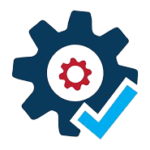UI & UX
Design & Development
We Design Applications That Are

Functionally Efficient
We design with purpose, ensuring that every interaction is meaningful and that the application’s functionality is smooth and efficient.

User-Centric
We prioritize the end-user experience, crafting interfaces that are intuitive, accessible, and tailored to meet the needs of your target audience.

Innovative
We stay up-to-date with the latest design trends, bringing fresh ideas to make your application stand out in the market.

Accessible
Our designs are inclusive, making sure that people of all abilities can use your application comfortably.
UX & UI Design for Web and Mobile Apps
UX & UI Design Company
At ADK Technology Co., we are dedicated to crafting user-centered designs that harmonize aesthetics with functionality. Our UX and UI design services for web and mobile apps are meticulously tailored to deliver seamless, engaging digital experiences that not only meet but exceed your business goals. By focusing on usability, visual appeal, and strategic design, we help your brand forge stronger connections with users, driving both satisfaction and loyalty.


Mobile App Design
Our mobile app designs are optimized for both iOS and Android platforms, ensuring smooth performance and a cohesive user experience. We focus on creating apps that are not only easy to navigate but also visually engaging and efficient, providing users with a top-notch experience every time they interact with your app. Our designs consider the unique aspects of mobile use, such as touch gestures and screen sizes, to deliver apps that feel natural and intuitive.
Web App Design
We design responsive, intuitive web applications that provide a consistent user experience across all devices and platforms. Our approach ensures that your web app is not only visually appealing but also scalable, allowing it to grow alongside your business. We prioritize clarity and ease of navigation, creating interfaces that are both modern and user-friendly, which enhances user engagement and boosts conversion rates.

FAQ's
UX (User Experience) design focuses on the overall feel of the user’s experience when interacting with a digital product, ensuring it is easy, efficient, and enjoyable to use. UI (User Interface) design, on the other hand, deals with the visual aspects of the product, including the layout, colors, typography, and interactive elements. Together, UX and UI design work to create a cohesive, user-friendly experience.
Yes, we specialize in redesigning existing websites and apps to improve their usability and visual appeal. Whether your current design feels outdated or isn’t meeting your users’ needs, we can revamp the UX/UI to enhance performance and user satisfaction, ensuring your digital product is up to modern standards.
Absolutely. We design for both web and mobile platforms, ensuring that your digital product provides a seamless experience across all devices. Our designs are responsive, meaning they adapt to different screen sizes and resolutions, providing users with a consistent experience whether they’re on a desktop, tablet, or smartphone.
To get started, we typically need a clear understanding of your project goals, target audience, and any existing brand guidelines or design preferences you have. If you have any current designs or wireframes, those are also helpful. Our team will guide you through the initial steps to ensure we have everything we need to start the project successfully.
Yes, we offer user testing and feedback as an integral part of our UX design process. By testing with real users, we gather insights into how they interact with your product, identify any pain points, and make informed adjustments to improve the overall user experience before the final launch.
Prototyping is a critical step in our design process. It allows us to create interactive models of your application that simulate the user experience. Prototypes are invaluable for testing and refining the design before development begins, helping to identify potential issues and gather user feedback early in the process. This reduces the risk of costly changes later on.
